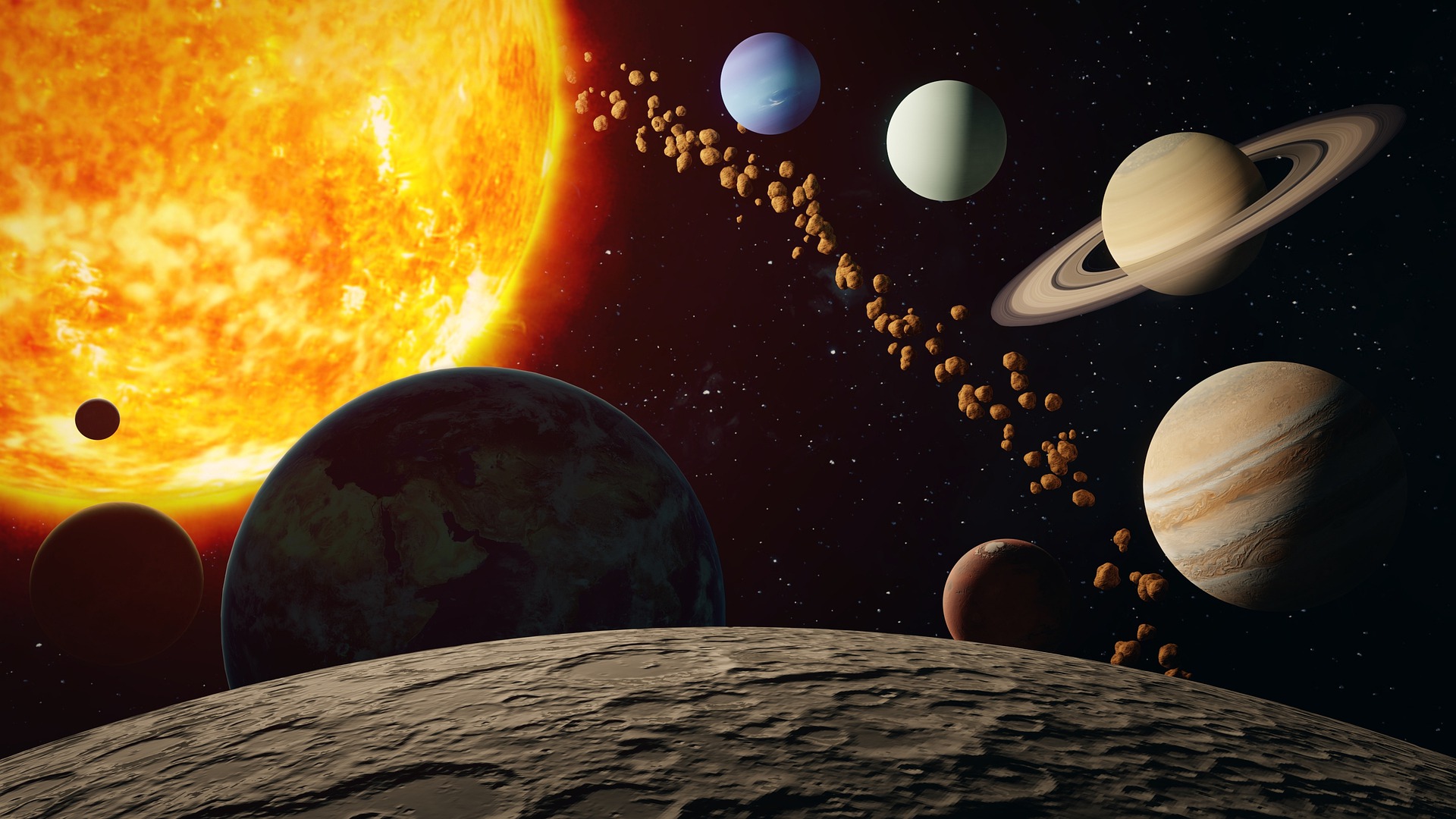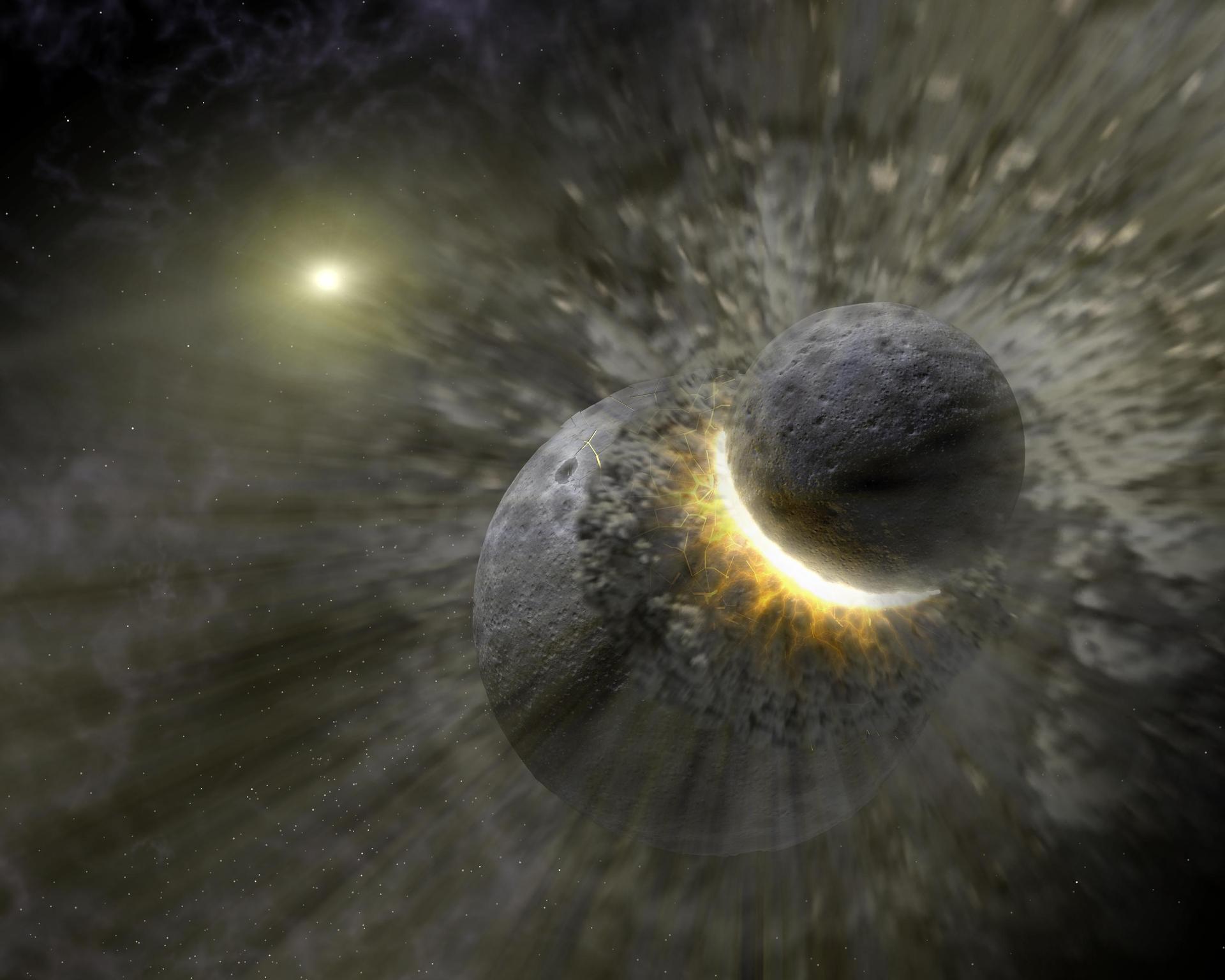
Earth probably shouldn't exist.
That's because the orbits of the inner solar system planets — Mercury, Venus, Earth and Mars — are chaotic, and models have suggested that these inner planets should have crashed into each other by now. And yet, that hasn't happened.
New research published May 3 in the journal Physical Review X may finally explain why.
Through a deep plunge into the models for planetary motion, the researchers discovered that the motions of the inner planets are constrained by certain parameters that act as a tether that inhibits the system's chaos. Besides providing a mathematical explanation for the apparent harmony in our solar system, the new study's insights may help scientists understand the trajectories of exoplanets surrounding other stars.
Unpredictable planets
Planets constantly exert a mutual gravitational pull on each other – and these little tugs constantly make minor adjustments to the planets' orbits. The outer planets, which are much larger, are more resistant to little tugs and so maintain comparatively stable orbits.
The problem of inner planet trajectories, however, is still too complicated to solve exactly. In the late 19th century, mathematician Henri Poincaré proved that it is mathematically impossible to solve the equations governing the motion for three or more interacting objects, often known as the "three body problem." As a result, uncertainties in the details of the planets' starting positions and velocities balloon over time. In other words: It is possible to take two scenarios in which the distances between Mercury, Venus, Mars and Earth differ by the slightest amount, and in one the planets smash into each other and in another they veer apart.

The time it takes for two trajectories with almost identical starting conditions to diverge by a specific amount is known as the Lyapunov time of the chaotic system. In 1989, Jacques Laskar, astronomer and research director at the National Center for Scientific Research and Paris Observatory and a co-author of the new study, calculated the characteristic Lyapunov time for the planetary orbits of the inner solar system was just 5 million years.
"It means basically that you lose one digit every 10 million years," Laskar, told Live Science. So, for example if the initial uncertainty in the position of a planet is 15 meters, 10 million years later this uncertainty would be 150 meters; after 100 million years, a further 9 digits are lost, giving an uncertainty of 150 million kilometers, equivalent to the distance between Earth and the sun. "Basically you have no idea where the planet is," said Laskar.
While 100 million years may seem long, the solar system itself is over 4.5 billion years old, and the lack of dramatic events — such as a planetary collision or a planet being ejected from all this chaotic motion — long puzzled scientists.
Laskar then looked at the problem in a different way: by simulating the inner planet trajectories over the next 5 billion years, stepping from one moment to the next. He found just a 1% chance of a planetary collision. With the same approach, he calculated that it would take, on average, about 30 billion years for any of the planets to collide.
Reining in the chaos
Delving through the math, Laskar and his colleagues then identified for the first time "symmetries" or "conserved quantities" in the gravitational interactions that create a "practical barrier in the chaotic wandering of the planets," Laskar said.
These emergent quantities remain nearly constant and inhibit certain chaotic motions, but don't prevent them altogether, much like the raised lip of a dinner plate will inhibit food falling off the plate but not prevent it completely. We can thank these quantities for our solar system's apparent stability.
Renu Malhotra, Professor of Planetary Sciences at the University of Arizona who was not involved in the study, highlighted how subtle the mechanisms identified in the study are. Malhotra told Live Science that it is interesting that "our solar system's planetary orbits exhibit exceptionally weak chaos."
In other work, Laskar and colleagues are searching for clues as to whether the number of planets in the solar system ever differed from what we currently see. For all the stability evident today, whether that has always been the case over the billions of years before life evolved remains an open question.







